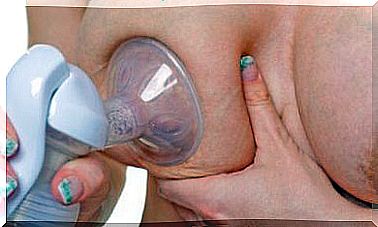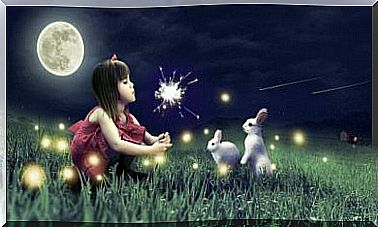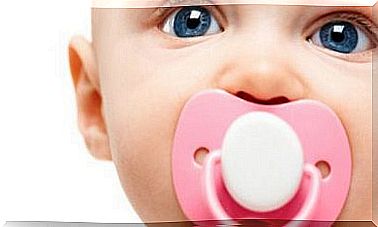Hypersomnia In Children
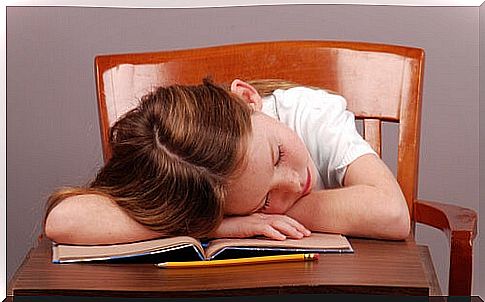
Hypersomnia is a sleep disorder characterized by continuous and involuntary episodes of sleepiness, especially during the day. In particular, hypersomnia in children is often confused with other disorders or behaviors related to their age. So how do you differentiate your symptoms?
Despite being more frequent in adolescents and young adults, the diagnosis of hypersomnia can occur at any stage of life, including childhood. In children aged 2 to 7 years, the disorder manifests itself with periods of nocturnal sleep longer than eight hours.
Children are sleepy and have recurrent naps during the day. This happens even in the presence of other children and in the middle of an activity. Sometimes, on the other hand, they develop an unexpected hyperactivity.
In addition to unexplained sleep, loss of concentration, irritability, bad behavior and poor academic performance are evident. When it comes to hypersomnia in teenagers, the physical, mental and emotional state are affected.
Young people cannot control their fatigue, feel anxiety, feel disoriented and are quite aggressive.
Types of hypersomnia
Hypersomnia or excessive sleepiness must be distinguished from simple tiredness. Those who experience weakness, fatigue or depression choose sleep as a revitalizing agent.
The disorder – on the contrary – “forces” the person to sleep at any time and situation, regardless of whether the body needs it or not. In essence, it modifies the normal sleep cycle, generates memory loss and attention deficit.
There are two types of hypersomnias:
- The primary, originated in the central nervous system;
- And the secondary, produced by chronic sleep deprivation. This is the most common in children and teenagers.
Although it is less diagnosed, primary hypersomnia deserves close attention. It is caused by narcolepsy, Kleine-Levin Syndrome (Sleeping Beauty Syndrome) or for idiopathic or unknown reasons.
Narcolepsy, specifically, generates a clinical picture of cataplexy (muscle hypotonia), sleep disruption and unrealistic perceptions. In addition, it can impair extremity mobility and cause rapid eye movements and recurrent parasomnias.
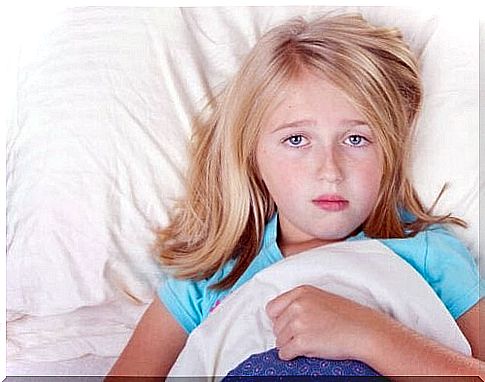
What causes hypersomnia in children?
The most common cause of hypersomnia in children is chronic sleep deprivation caused by changing schedules, illnesses, neurological conditions or primary sleep disorders.
The circadian rhythm is misadjusted when the sleep phase is advanced or delayed, as well as when there are sudden changes in time zones. Or also when intense activities are developed at night.
In children, daytime hypersomnia is the result, in most cases, of deficient neglect. It occurs when children spend hours in front of the television, computer or other electronic device at night. As a result, rest is reduced by having to get up early to meet school obligations.
Another main cause, especially in children who are between 2 and 8 years old, is Obstructive Sleep Apnea Syndrome (OSAS). This disorder interrupts, for a fraction of a second, breathing when the person is sleeping, thus avoiding complete rest.
Other agents can influence the onset of hypersomnia. Among them, the following stand out:
- Head injuries.
- Neurological pathologies.
- Action of medicines.
- Overweight.
If there is involvement of the central nervous system, presence of tumors, or a family history, there may also be a diagnosis.
What other discomfort does it cause?
The main result of hypersomnia is exaggerated and uncontrollable sleepiness. Sleeping hours will never be enough. In order to be identified as such, sleep alterations must last for at least a month.
With drowsiness, other discomforts are produced, such as anguish, slow thinking and speech and lack of appetite. At the same time, there may be difficulty remembering, lack of energy and inability to develop in social situations.
If hypersomnia is linked to Kleine-Levin Syndrome, the person may sleep for 18 hours or more.

Most common treatments for hypersomnia
The initial recommendation is to monitor the child’s sleep cycles, as well as recording changes and possible risk factors. The relationship with the environment and lifestyle are factors that help parents and specialists to analyze the complexity of the disorder.
When hypersomnia is caused by narcolepsy, the child can have a normal life as long as the treatment approach is comprehensive. Families, teachers and schoolmates must be aware of and involved in the treatment.
In general, hypersomnia in children, adolescents and adults should receive therapeutic treatment and, if necessary, pharmacological treatment as well. Otherwise, the condition can become more serious.
Patients may experience frequent sleep episodes when sleeping twelve to eighteen hours a day, which will affect their ability to interact and perform their tasks. To prevent this from happening, it is possible to resort to body, communication and attention therapies.



